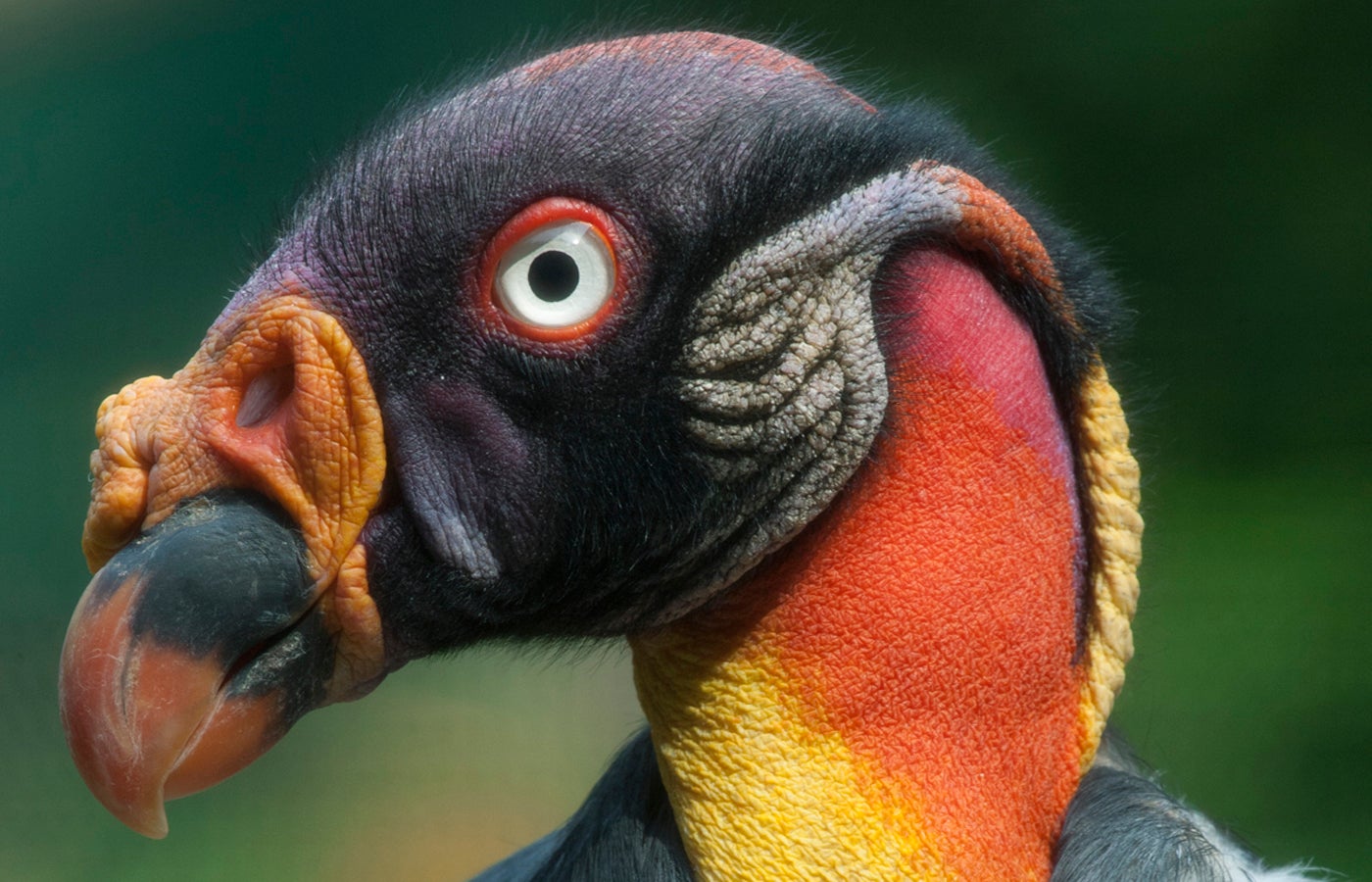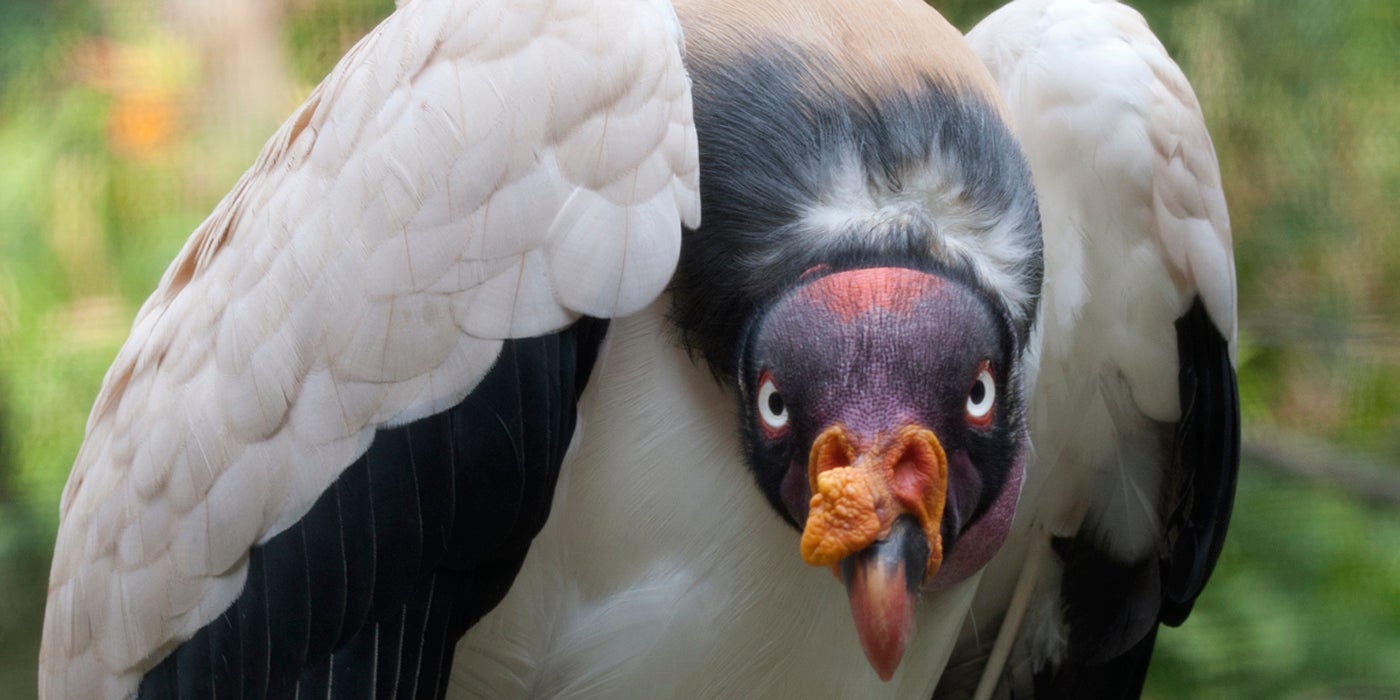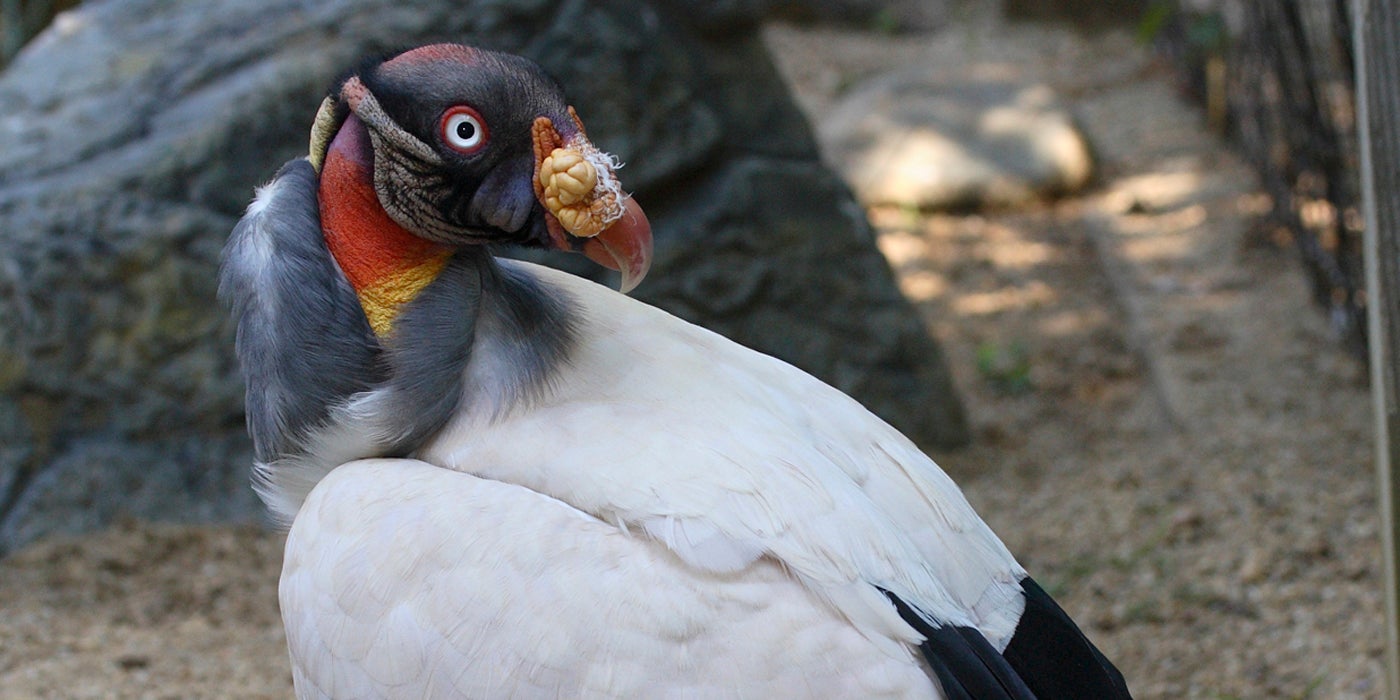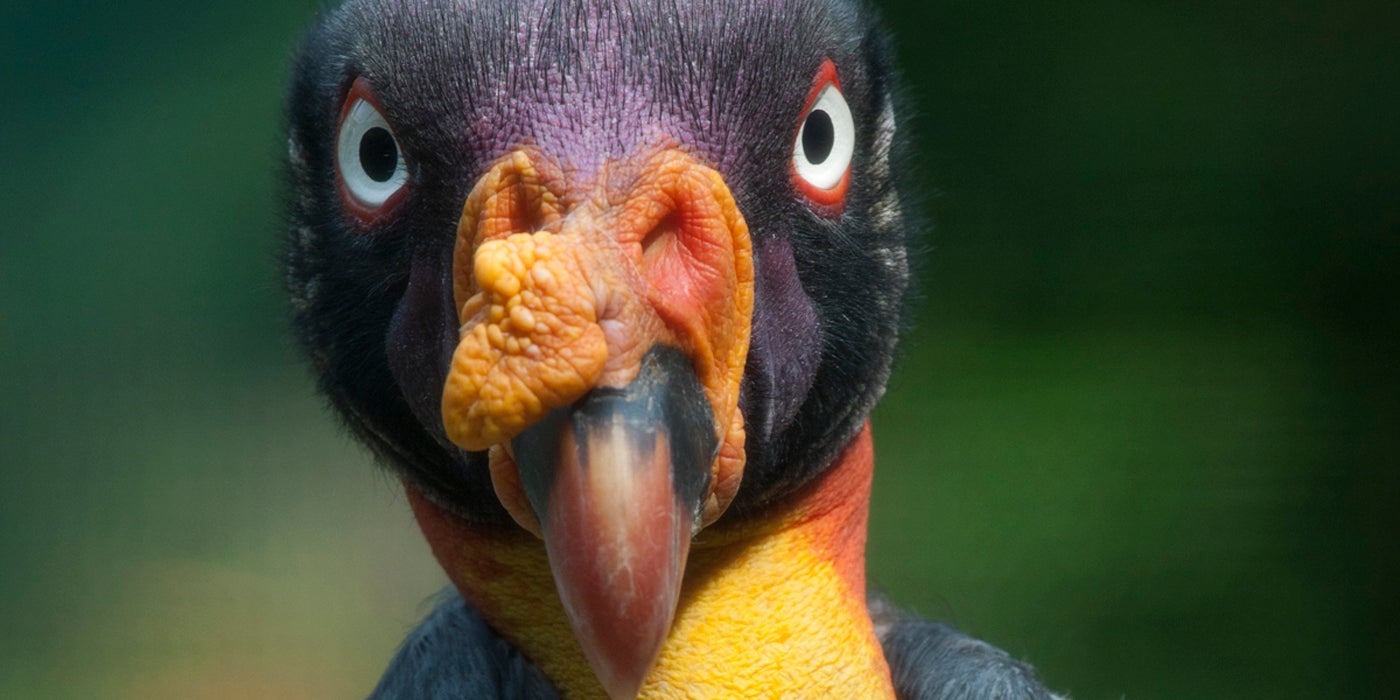|
|
Post by oldcyansilverback on Jan 1, 2023 6:38:19 GMT -5
Fun Facts About King Vultures.  Unlike many New World vultures, the king vulture does not have eyelashes.  King vultures grow to about 2.5 feet tall and may get to a weight of 8 pounds, making them the largest New World vulture, except for the condors.  A distinctive bird, the king vulture is easily recognized. The wings are short and quite broad and from the neck down the birds are white with a black band running along the rear edge of the wings. A small collar of feathers at the base of the neck is blackish-gray while the bare skin on the head and neck is orange, green, yellow and purplish blue. The crown is covered with small bristle-like feathers and a fleshy wattle directly above the nostrils.  King vultures eat carrion. They have a thick, strong beak which is well adapted for tearing, and long, thick claws for holding the meat. They have keen eyesight and sense of smell that they use to find their food. Though it appears to dominate over a feeding site, this vulture actually relies on other stronger-beaked carrion-eaters to initially rip open the hide of a carcass.  Did you know: the fleshy wattle that bulges from the king vulture's beak is called a 'caruncle.' Both males and females sport these facial features, though the wattle's purpose continues to perplex scientists. This story appears in the May 2017 issue of National Zoo News. Learn more about king vultures at the Bird House outdoor exhibit! nationalzoo.si.edu/animals/news/fun-facts-about-king-vultures
|
|
|
|
Post by oldcyansilverback on Jan 1, 2023 6:38:39 GMT -5
King Vulture - Sarcoramphus papa Anatomy The king vulture is one of the larger species of vulture. It can grow to be 32 inches long. Unlike other vultures, which are dark in color, king vultures are creamy white, with darker tail-features. The feathers around their heads and necks are blue, red, orange and yellow. The skin drooping over their beak, called a wattle, is a bright red-orange. Their beak is thick and strong, great for shredding flesh, and their long thick claws are good for keeping a tight grip on their dinner. Habitat These large birds live in the uppermost branches of emergent canopy trees anywhere from Mexico to central Argentina and Trinidad. They perch high up in these trees so that they have a great view of what is going on below them. They have excellent eyesight and rely on it to watch out for other vultures that have spotted carrion. The king vulture's sense of smell is not as good as that of other types of vultures, so they do not always use it to detect food. When it sees that other scavenger birds have discovered a meal, they shoot down from the sky and push the others out of the way. All of the other species vultures are quick to move aside for the "king." Diet Like other scavengers, the king vulture does not kill its own food. Instead, it feasts on the carcasses and remains of animals that have been killed by some other means (known as carrion). Threats Though the species is not universally listed as endangered, the populations of king vultures are in decline due to habitat destruction. These royal birds cannot survive if the forests they call home disappear. Sources Jukofsky, Diane. Encyclopedia of Rainforests. Connecticut: Oryx Press, 2002. The Belize Zoo: www.belizezoo.org/zoo/zoo/birds/vul/vul1.htmlUniversity of Michigan Museum of Zoology: www.animaldiversity.orgwww.rainforest-alliance.org/species/king-vulture |
|
|
|
Post by Gorilla king on Jan 6, 2023 18:15:59 GMT -5
KING VULTURE
|
|
|
|
Post by oldcyansilverback on Jan 7, 2023 0:35:38 GMT -5
To be honest, this vulture is one of the most colourful animals. The painted vulture which is equally as colourful is already extinct.
|
|
|
|
Post by Gorilla king on Aug 16, 2023 18:07:11 GMT -5
|
|
|
|
Post by oldcyansilverback on Aug 21, 2023 7:42:04 GMT -5
King vultures are only weaker than both the Andean condor and Californian condor.
|
|